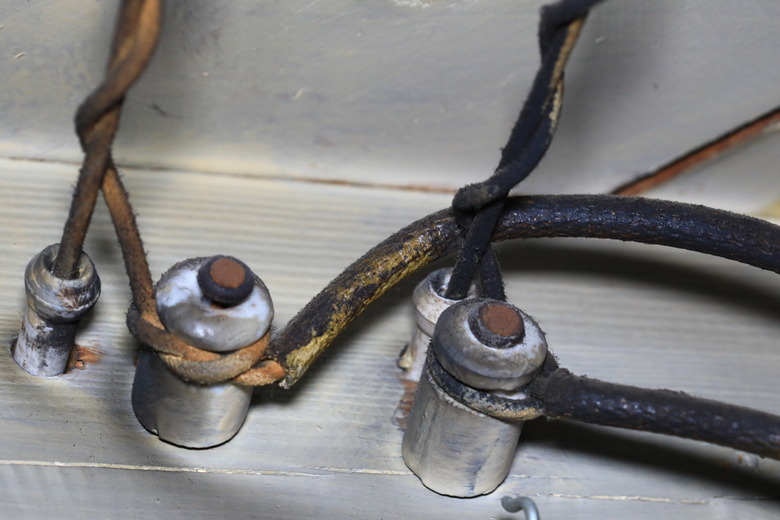How To Rewire A House From Knob & Tube Wiring
Houses built before 1950 often have knob and tube wiring. The wires are usually most visible in the basement, where you'll see rubber-coated wires strung from the ceiling like clotheslines. The wires are attached to joists and studs by porcelain knobs, and when they have to pass through wood, they do so through a porcelain tube.
Knob and tube wiring was state of the art when it was installed, but today it's considered a safety hazard. One reason is that the rubber insulation degrades over time and flakes off, leaving exposed metal conductors. Another is that the wires dissipate heat and can start a fire when in contact with insulation. A third important reason is that knob and tube wiring isn't grounded. It has only hot and return wires that are run separately and not bundled in a single cable like modern wires.
Unsurprisingly, insurance companies don't like knob and tube wiring, so if your house or a house you're considering purchasing has it, you might have trouble getting coverage. Even if you have coverage, you should consider upgrading your wiring, and that could mean a complete rewire. If that's outside your budget, there are a few things you can do to reduce the risk of fire and shock.
The Complete Rewire Option
The Complete Rewire Option
Converting a knob and tube wiring system to a code-complaint modern electrical system starts at the panel. The old panel should be removed and replaced with a 100-amp or larger breaker box that is properly grounded. The old wires need to be disconnected and, wherever possible, pulled out. You'll probably want to remove each house knob and tube while you're at it. Run grounded two- and three-conductor cables as needed. You can often attach these to the old wires so that as you're pulling out the old wires you're automatically replacing them with new cables.
All the old switches and outlets also have to go and must be replaced with code-compliant grounded ones. Older, ungrounded light fixtures should also be replaced and the light fixture tubing removed.
Partially Replacing Knob and Tube Wiring
Partially Replacing Knob and Tube Wiring
Completely rewiring a house is bound to be an expensive proposition, in most cases involving removal of some wall coverings to remove old wires and install new ones. To save money, homeowners often opt for a partial rewire, but it's important to note that incorrectly tying new wiring to existing knob and tube wiring simply adds one more hazard. Nevertheless, replacing old wires with frayed insulation from your basement is better than doing nothing, even if that's all you do.
All wire connections must be in code-approved junction boxes. Any knob and tube junction box you can find in your house is guaranteed to fall short of code compliance and should be replaced. Keep in mind that any circuits that continue to utilize knob and tube wiring can overheat when you use them to power large appliances or multiple devices at the same time.
A Quick Fix – Install GFCI Outlets
A Quick Fix – Install GFCI Outlets
Partial replacement of knob and tube wiring removes the hazard created by exposed wires with deteriorating insulation, but it doesn't solve the problem of grounding. A quick solution to this problem is to replace all the outlets with ground fault circuit interrupting outlets. Each GFCI contains a breaker that switches off the power when it detects a ground fault and is an effective substitute for actual circuit grounding. If you have a breaker box and not an outdated fuse box, which is common in houses with knob and tube wiring, you can also get ground protection by replacing all of the breakers with GFCI breakers.
